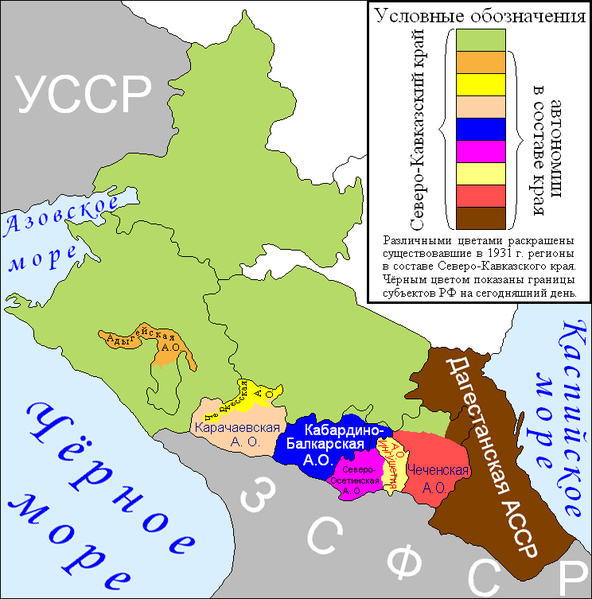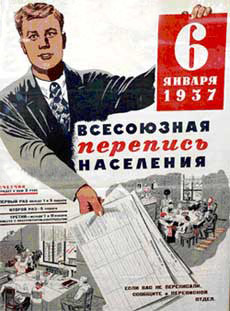|
Azov-Black Sea Krai
Azov-Black Sea Krai (russian: Азово-Черноморский край, ''Azovo-Chernomorskiy kray'') was an early ''krai'' of the Russian SFSR of the Soviet Union. Its capital was Rostov-on-Don Rostov-on-Don ( rus, Ростов-на-Дону, r=Rostov-na-Donu, p=rɐˈstof nə dɐˈnu) is a port city and the administrative centre of Rostov Oblast and the Southern Federal District of Russia. It lies in the southeastern part of the East Eu .... It was formed on 10 January 1934 out of the North Caucasus Krai. According to the 1937 All-Union Census, it had population of 5,601,759. On 13 September 1937 it was split into Krasnodar Krai and Rostov Oblast. References 1934 establishments in Russia 1937 disestablishments in Russia Former administrative units of Russia History of Rostov Oblast {{russia-hist-stub ... [...More Info...] [...Related Items...] OR: [Wikipedia] [Google] [Baidu] |
Krai
A krai or kray (; russian: край, , ''kraya'') is one of the types of federal subjects of modern Russia, and was a type of geographical administrative division in the Russian Empire and the Russian SFSR. Etymologically, the word is related to the verb "" (''kroit'''), "to cut". Historically, krais were vast territories located along the periphery of the Russian state, since the word ''krai'' also means ''border'' or ''edge'', i.e., ''a place of the cut-off''. In English the term is often translated as "territory". , the administrative usage of the term is mostly traditional, as some oblasts also fit this description and there is no difference in constitutional legal status in Russia between the krais and the oblasts. See also * Krais of the Russian Empire * Krais of Russia * Governorate-General (Russian Empire), a general term for Krais, Oblasts, and special city municipalities in the Russian Empire *Oblast ;Foreign terms (in relation to the Russian "Krai") with similar ... [...More Info...] [...Related Items...] OR: [Wikipedia] [Google] [Baidu] |
Russian Soviet Federative Socialist Republic
The Russian Soviet Federative Socialist Republic, Russian SFSR or RSFSR ( rus, Российская Советская Федеративная Социалистическая Республика, Rossíyskaya Sovétskaya Federatívnaya Socialistíčeskaya Respúblika, rɐˈsʲijskəjə sɐˈvʲetskəjə fʲɪdʲɪrɐˈtʲivnəjə sətsɨəlʲɪˈsʲtʲitɕɪskəjə rʲɪˈspublʲɪkə, Ru-Российская Советская Федеративная Социалистическая Республика.ogg), previously known as the Russian Soviet Republic and the Russian Socialist Federative Soviet Republic as well as being unofficially known as Soviet Russia,Declaration of Rights of the laboring and exploited people, article I. the Russian Federation or simply Russia, was an Independence, independent Federalism, federal socialist state from 1917 to 1922, and afterwards the largest and most populous of the Republics of the Soviet Union, Soviet socialist republics of the So ... [...More Info...] [...Related Items...] OR: [Wikipedia] [Google] [Baidu] |
Rostov-on-Don
Rostov-on-Don ( rus, Ростов-на-Дону, r=Rostov-na-Donu, p=rɐˈstof nə dɐˈnu) is a port city and the administrative centre of Rostov Oblast and the Southern Federal District of Russia. It lies in the southeastern part of the East European Plain on the Don River (Russia), Don River, from the Sea of Azov, directly north of the North Caucasus. The southwestern suburbs of the city lie above the Don river delta. Rostov-on-Don has a population of over one million people, and is an important cultural centre of Southern Russia. History Early history From ancient times, the area around the mouth of the Don River has held cultural and commercial importance. Ancient indigenous inhabitants included the Scythians, Scythian and Sarmatians, Sarmatian tribes. It was the site of Tanais, colonies in antiquity, an ancient Greek colony, Gazaria (Genoese colonies), Fort Tana under the Genoa, Genoese, and Azov#Fortress of Azov, Fort Azak in the time of the Ottoman Empire. In 1749, a c ... [...More Info...] [...Related Items...] OR: [Wikipedia] [Google] [Baidu] |
Sin Escudo
In a religious context, sin is a transgression against divine law. Each culture has its own interpretation of what it means to commit a sin. While sins are generally considered actions, any thought, word, or act considered immoral, selfish, shameful, harmful, or alienating might be termed "sinful". Etymology From Middle English sinne, synne, sunne, zen, from Old English synn (“sin”), from Proto-West Germanic *sunnju, from Proto-Germanic *sunjō (“truth, excuse”) and *sundī, *sundijō (“sin”), from Proto-Indo-European *h₁s-ónt-ih₂, from *h₁sónts ("being, true", implying a verdict of "truly guilty" against an accusation or charge), from *h₁es- (“to be”); compare Old English sōþ ("true"; see sooth). Doublet of suttee. Bahá'í Baháʼís consider humans to be naturally good, fundamentally spiritual beings. Human beings were created because of God's immeasurable love for us. However, the Baháʼí teachings compare the human heart to a mirror, whic ... [...More Info...] [...Related Items...] OR: [Wikipedia] [Google] [Baidu] |
Krai
A krai or kray (; russian: край, , ''kraya'') is one of the types of federal subjects of modern Russia, and was a type of geographical administrative division in the Russian Empire and the Russian SFSR. Etymologically, the word is related to the verb "" (''kroit'''), "to cut". Historically, krais were vast territories located along the periphery of the Russian state, since the word ''krai'' also means ''border'' or ''edge'', i.e., ''a place of the cut-off''. In English the term is often translated as "territory". , the administrative usage of the term is mostly traditional, as some oblasts also fit this description and there is no difference in constitutional legal status in Russia between the krais and the oblasts. See also * Krais of the Russian Empire * Krais of Russia * Governorate-General (Russian Empire), a general term for Krais, Oblasts, and special city municipalities in the Russian Empire *Oblast ;Foreign terms (in relation to the Russian "Krai") with similar ... [...More Info...] [...Related Items...] OR: [Wikipedia] [Google] [Baidu] |
Russian Socialist Federative Soviet Republic
The Russian Soviet Federative Socialist Republic, Russian SFSR or RSFSR ( rus, Российская Советская Федеративная Социалистическая Республика, Rossíyskaya Sovétskaya Federatívnaya Socialistíčeskaya Respúblika, rɐˈsʲijskəjə sɐˈvʲetskəjə fʲɪdʲɪrɐˈtʲivnəjə sətsɨəlʲɪˈsʲtʲitɕɪskəjə rʲɪˈspublʲɪkə, Ru-Российская Советская Федеративная Социалистическая Республика.ogg), previously known as the Russian Soviet Republic and the Russian Socialist Federative Soviet Republic as well as being unofficially known as Soviet Russia,Declaration of Rights of the laboring and exploited people, article I. the Russian Federation or simply Russia, was an independent federal socialist state from 1917 to 1922, and afterwards the largest and most populous of the Soviet socialist republics of the Soviet Union (USSR) from 1922 to 1991, until becoming a so ... [...More Info...] [...Related Items...] OR: [Wikipedia] [Google] [Baidu] |
Soviet Union
The Soviet Union,. officially the Union of Soviet Socialist Republics. (USSR),. was a transcontinental country that spanned much of Eurasia from 1922 to 1991. A flagship communist state, it was nominally a federal union of fifteen national republics; in practice, both its government and its economy were highly centralized until its final years. It was a one-party state governed by the Communist Party of the Soviet Union, with the city of Moscow serving as its capital as well as that of its largest and most populous republic: the Russian SFSR. Other major cities included Leningrad (Russian SFSR), Kiev (Ukrainian SSR), Minsk ( Byelorussian SSR), Tashkent (Uzbek SSR), Alma-Ata (Kazakh SSR), and Novosibirsk (Russian SFSR). It was the largest country in the world, covering over and spanning eleven time zones. The country's roots lay in the October Revolution of 1917, when the Bolsheviks, under the leadership of Vladimir Lenin, overthrew the Russian Provisional Government ... [...More Info...] [...Related Items...] OR: [Wikipedia] [Google] [Baidu] |
North Caucasus Krai
North Caucasus Krai (russian: Се́веро-Кавка́зский край, ''Severo-Kavkazskiy kray'') was an administrative division (''krai'') within the Russian Soviet Federative Socialist Republic of the Soviet Union. It was established on 17 October 1924. Its administrative center was Rostov-on-Don until 10 January 1934, Pyatigorsk until January 1936, then Ordzhonikidze (today Vladikavkaz) and, from 15 December 1936, Voroshilovsk (today Stavropol). As of 1932, the population of the krai was estimated at 10,290,000 in an area of 351,800 km2. 45.9% of the overall population was Russian, and 37.2% of the overall population was Ukrainian. Widespread death by starvation occurred in the krai during the Soviet famine of 1932–33. As of the 1937 All-Union Census, the krai had a population of 1,635,277 in a smaller area. After undergoing numerous administrative changes, including the loss of the majority of its territory to the new Azov-Black Sea Krai on 10 January 1934, i ... [...More Info...] [...Related Items...] OR: [Wikipedia] [Google] [Baidu] |
1937 All-Union Census
The 1937 Soviet census held on January 6, 1937, was the most controversial of the censuses taken within the Soviet Union. The census results were not published because the census showed much lower population figures than anticipated, especially in Ukraine due to the 1932-1933 Soviet famine, although it still showed a population growth from the last census in 1926, from 147 million to 162 million people in 1937. Delays After the First All-Union Census of the Soviet Union of 1926, the next census was planned to be held in 1933.Ye. M. Andreyev, L. Ye. Darsky, and T. L. Kharkova ''On the trails of the deleted census'' Originally published in Население Советского Союза. 1922—1991. � ... [...More Info...] [...Related Items...] OR: [Wikipedia] [Google] [Baidu] |
Krasnodar Krai
Krasnodar Krai (russian: Краснода́рский край, r=Krasnodarsky kray, p=krəsnɐˈdarskʲɪj kraj) is a federal subject of Russia (a krai), located in the North Caucasus region in Southern Russia and administratively a part of the Southern Federal District. Its administrative center is the city of Krasnodar. The third most populous federal subject, the krai had a population of 5,226,647 as of the 2010 Census. Krasnodar Krai is formally and informally referred to as Kuban (russian: Кубань), a term denoting the historical region of Kuban situated between the Sea of Azov and the Kuban River which is mostly composed of the krai's territory. It is bordered by Rostov Oblast to the north, Stavropol Krai to the east, Karachay-Cherkessia to the south-east, and Adygea is an enclave entirely within the krai. Krasnodar Krai shares an international border with the disputed region of Georgia, Abkhazia, to the south, and borders annexed Crimea to the west, acr ... [...More Info...] [...Related Items...] OR: [Wikipedia] [Google] [Baidu] |
Rostov Oblast
Rostov Oblast ( rus, Росто́вская о́бласть, r=Rostovskaya oblast, p=rɐˈstofskəjə ˈobləsʲtʲ) is a federal subject of Russia (an oblast), located in the Southern Federal District. The oblast has an area of and a population of 4,277,976 ( 2010 Census), making it the sixth most populous federal subject in Russia. Its administrative center is the city of Rostov-on-Don, which also became the administrative center of the Southern Federal District in 2002. Geography Rostov Oblast borders Ukraine (Donetsk and Luhansk Oblasts) and also Volgograd and Voronezh Oblasts in the north, Krasnodar and Stavropol Krais in the south, and the Republic of Kalmykia in the east. The Rostov oblast is located in the Pontic-Caspian steppe. It is directly north over the North Caucasus and west of the Yergeni hills.Google Earth It is within the Russian Southern Federal District. Rivers and lakes The Don River, one of Europe's longest rivers, flows through the oblast for part of ... [...More Info...] [...Related Items...] OR: [Wikipedia] [Google] [Baidu] |
1934 Establishments In Russia
Events January–February * January 1 – The International Telecommunication Union, a specialist agency of the League of Nations, is established. * January 15 – The 8.0 Nepal–Bihar earthquake strikes Nepal and Bihar with a maximum Mercalli intensity of XI (''Extreme''), killing an estimated 6,000–10,700 people. * January 26 – A 10-year German–Polish declaration of non-aggression is signed by Nazi Germany and the Second Polish Republic. * January 30 ** In Nazi Germany, the political power of federal states such as Prussia is substantially abolished, by the "Law on the Reconstruction of the Reich" (''Gesetz über den Neuaufbau des Reiches''). ** Franklin D. Roosevelt, President of the United States, signs the Gold Reserve Act: all gold held in the Federal Reserve is to be surrendered to the United States Department of the Treasury; immediately following, the President raises the statutory gold price from US$20.67 per ounce to $35. * February 6 – French pol ... [...More Info...] [...Related Items...] OR: [Wikipedia] [Google] [Baidu] |
2.jpg)


